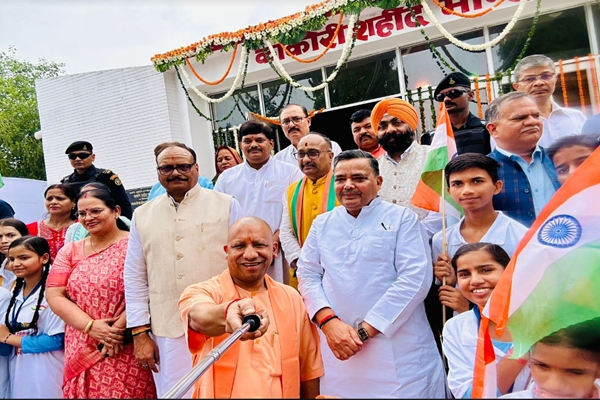Syllabus:
GS1: The Freedom Struggle – its various stages and important contributors /contributions from different parts of the country.
Context:
Recently, the Prime Minister commemorated the 100th anniversary of the Kakori Rail Action, honouring the courage and sacrifice of revolutionaries in India’s freedom struggle.
Kakori Rail Conspiracy
- The Kakori Rail Conspiracy, often referred to as the Kakori Train Robbery, took place on August 9, 1925.
- The members of the Hindustan Republican Association (HRA), including Ram Prasad Bismil, Ashfaqulla Khan, Chandrashekhar Azad, Rajendra Lahiri, and Roshan Singh, stopped the 8-Down train on the Saharanpur–Lucknow line near Kakori railway station in Uttar Pradesh and seized cash from the guard’s coach belonging to the British Treasury.
- In 2021, the Uttar Pradesh government renamed Kakori Rail Robbery or Conspiracy as Kakori Rail Action, to honour the revolutionaries involved in the 1925 action as heroes of India’s freedom struggle, rather than portraying them as conspirators.
Purpose:
- The main purpose of the robbery was to protest against the heavy tax collected from the Indians and use the money to fund the Hindustan Republican Association (HRA), thereby striking a blow against British rule and garnering public support for the movement to achieve Indian independence.
- This audacious act was intended not only to secure funds for the movement but also to send a political message against British exploitation and gain attention for their cause.
Hindustan Republican Association (HRA)
- HRA was an Indian revolutionary organization founded in October 1924 by Sachindra Nath Sanyal, Ram Prasad Bismil, and others to achieve an independent India through armed struggle after the Non-Cooperation Movement ended.
- Key figures like Bhagat Singh were also associated with it, and the group later became the Hindustan Socialist Republican Association (HSRA) after adding “Socialist” to its name in 1928.
Case Trial:
- The British government launched an intensive investigation, leading to the arrest of most of the conspirators.
- The trial took place between 1925 and 1926, with 29 accused individuals facing charges of robbery and sedition.
- Two individuals became prosecution witnesses in exchange for lighter sentences.
- The trial resulted in death sentences for Ram Prasad Bismil, Ashfaqullah Khan, Rajendra Lahiri, and Thakur Roshan Singh.
- Bismil, Ashfaqullah Khan, and Rajendra Lahiri were hanged in December 1927.
- Sachindranath Sanyal and Sachindranath Bakshi were deported, while others received prison terms ranging from 10 to 14 years.
- Chandrashekhar Azad continue to evade arrest and continued revolutionary activities till his martyrdom in 1931.

